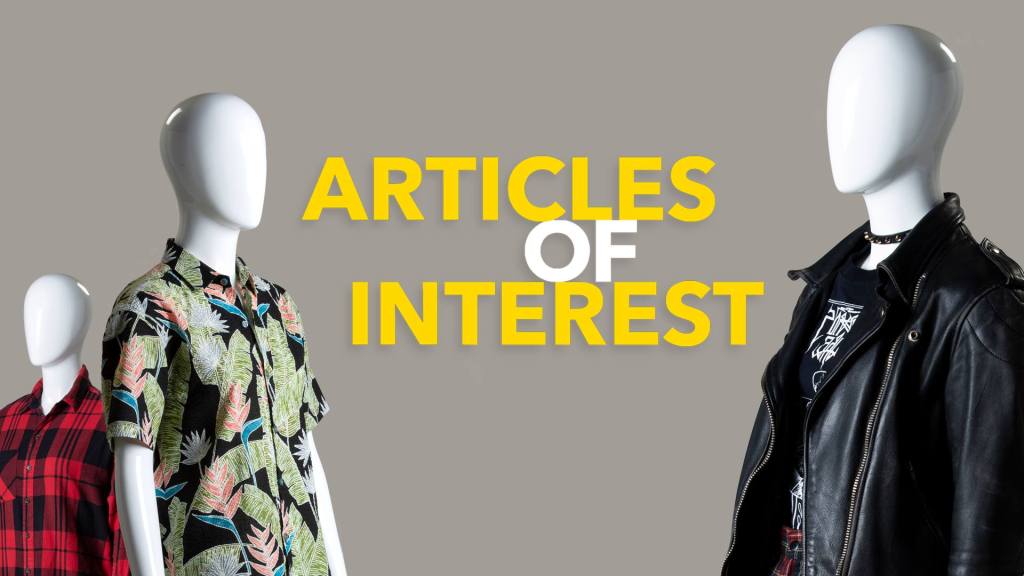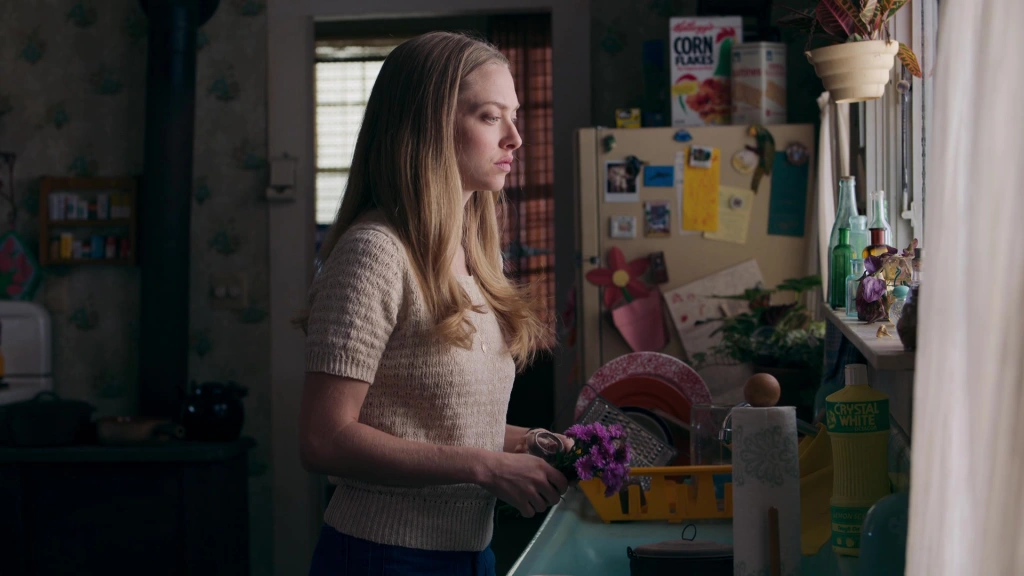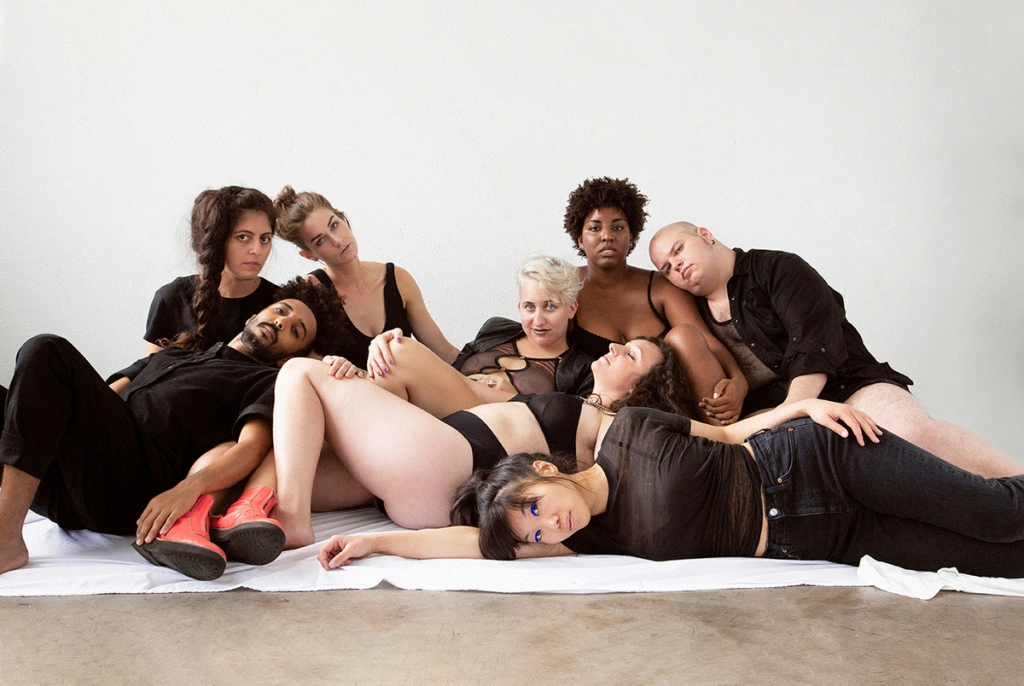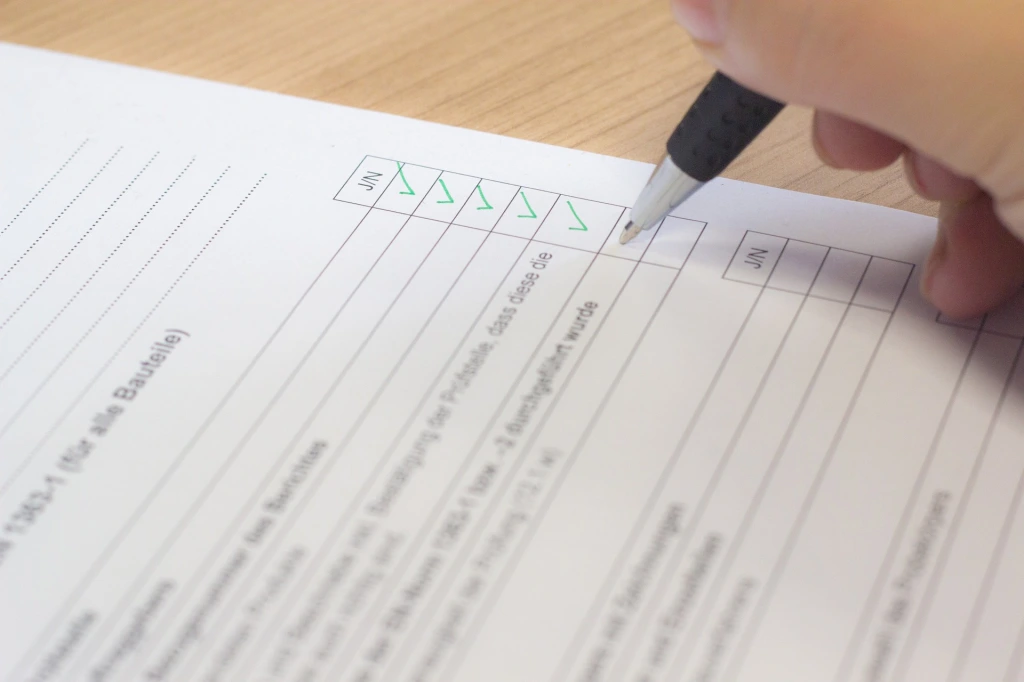It is 2023, and we are seeing the fallout of Google’s enshittification. If you have turned to Google hoping to find any useful information and come up short recently, you’re not just bad at Google. Anymore, Google is bad at Google: Google the service is no longer providing Google the concept at all. Search results are a mess, typically spitting back nothing useful no matter how you search. Likewise, we’re seeing the almost complete dissolve of platforms like Twitter and Reddit — meaning the massive amounts of information that could previously be found there are largely going up in smoke.
We have gone from an era where knowledge is right at our fingertips, accessible easily and almost immediately, with a quick search (at least, for those of us who have quick and easy access to the internet) to an era where the only information we can get is where to buy a thing.
I’m very glad — and extremely lucky — that my voracity for learning started before Google was the behemoth it became. Since I was a weird kid whose favorite TV shows were 60 Minutes and CBS Sunday Morning, whose favorite radio station was NPR, and who read the newspaper every week, I’ve cultivated a methodology for knowing a bunch of shit that isn’t dependent on Google, Twitter, or Reddit. Learning shit for no reason other than thinking it’s fun and cool is maybe my primary hobby, and it feels like high time I share how I do it.
I want to stress that my methodology isn’t easy, especially when you’re setting it up and getting used to it. This methodology revolves around me spending at least a hour or two every day devoted to learning — which I know is a privilege not everyone can afford. Those hours are spent doing other things too, like checking my social media, drinking a cup of coffee, eating breakfast, or getting my brain warmed up at work. I’ve started thinking about this practice as reading my daily newspaper, and to a certain degree it is, and to a certain degree that mindset helps the practice feel calming.
It should also be noted that I have ADHD, which makes the practice fun. There’s also just a ton of shit wrong with me so, you know, factor that in, too. If practicing curiosity and research don’t feel good to you, especially immediately, there’s nothing wrong with you. Let us not moralize these goals and practices.
Let us, instead, share our tactics and learn to learn, together.
Use a feed reader
I will allow myself one line to mourn Google Reader, the best RSS feed reader there ever was, a service that was killed by cowards and will likely never be replicated satisfactorily. Rest in peace, babygirl.
An RSS feed reader is essentially a service that grabs a bunch of sites that publish posts regularly and puts those posts all in one convenient location. Instead of checking NPR, The New Yorker, and Gizmodo every day separately, a feed reader collects all the recent posts from all of those sites in one portal for you. Feed readers can be more robust and offer more features and customization options, and I recommend doing some research to find which reader is best for you.
Currently, I use Feedly. Couldn’t tell you why. The thing about readers is that if they do their basic function well enough, I haven’t found major differences between them that matter to me much one way or another. What matters most, in my opinions, is that you are using a feed reader at all. The efficiency a reader gives is hard to stress, especially when you find yourself juggling dozens of different sources you want to check every day. There is absolutely no way I would be able to remember all of my daily sources otherwise, let alone have the energy or time to check them all individually.
If you like what the source is laying down, add it to your feed reader. You can always delete it later if it turns out not to serve you. If the source is giving you some pause, as always, honor that.
When you’ve signed up for your reader, you’ll need to actually add feeds for posts to populate. You should pull from your typical favorite news sources and blogs first. We’ll talk about discovering more sources soon, but it’s always wise to begin with what you know. If you don’t have any off the bat, I’ll share some of my favorites here — but I do not want this to become a guide on how to think like me. I highly, highly encourage branching out as much as possible, as long as you’re making sure your sources are high quality (more on this later as well).
- Vox: Vox is probably my favorite catch-all source. It’s the closest to an actual print newspaper without feeling soulless and horrifying. This is, of course, a sham; let us never forget that they laid off the inimitable and endlessly brilliant Emily St. James while she was on maternity leave, and let us all, therefore, subscribe to her great newsletter. Still, Vox is a generally left-leaning source for news, op-eds, reviews, etc. and the writing is typically solid as hell.
- Slate: Slate is like Vox, except the writing is worse and about 30% of the takes about media are unbelievably bad. But Slate‘s advice columns, specifically, are incredible. The long-running “Dear Prudence” column is a fairly straight-up advice column, typically dealing with interpersonal relationships. “How to Do It” is all about sex, and it’s extremely sex-positive and non-judgmental. “Care and Feeding” deals with parenting, idk, I don’t go here often. “Pay Dirt” deals with money and I don’t go to there either but it’s solid too. What’s most important in these columns for me isn’t necessarily the advice itself, though. It’s the experts they speak with and the additional sources you can find from them.
- The Verge: The Verge is focused on science, technology, and digital culture. They do really incredible investigative reporting and are often the source for goings-on in digital platform business news, like the downfall of Reddit. I really love the professional, concise, but still personality-heavy editorial voice of The Verge — I think their editors might be my favorites as a reader right now. This is also the current home of Hot Pod for my podcast folks out there.
- The Cut: The Cut is so dedicated to its glossy, professional, sophisticated image, but it is absolutely a guilty pleasure of mine. The Cut is fucking unhinged. They publish buckwild shit every week. Some of it is amazing, and beautiful, and moving. Some of it is an absolute fucking train wreck so divisive Twitter would go fucking rabid for weeks on end. You will always leave a feature from The Cut with something to turn over in your brain over and over and over again. The secret behind New York‘s verticals is that they’re all very, very expensive garbage. The Juicy Couture of publications.
- The G/O Suite: I’m a lifelong G/O lover, despite the suite of blogs being owned by a fucking awful person. G/O’s publications include Gizmodo (kind of a catch-all), The Takeout (food — I’ve written here, and for what it’s worth, they were extremely good to me and I absolutely adore their EIC), Kotaku (video games — have also written here, and they were also good to me. Kotaku has an anti-fanbase that sucks shit, so avoid the comments at all cost), io9 (sci-fi and nerd shit), and more. The writers are always incredible despite the nightmarish upper management, and that makes them even more amazing to me.
Check your feed reader often — and early
Right now, most people who are still on any social media are getting their news from that social media. Hopefully I don’t have to explain why that’s not ideal, but hey, here‘s a nightmarish piece from Vox that gives a very specific example of why. I’m not saying you should never get your news from social media. In fact, I think it’s literally inevitable and unavoidable. Incidental exposure to news isn’t all bad, especially if you’ve got friends whose tastes and minds you trust who post news (put a pin in this).
One core secret to knowing a lot of shit is that it’s actually about critical thinking: being in active intellectual dialogue with media gives you the ability to mine more meaning from it, and higher quality meaning from it.
But getting your news only from social media is something to avoid, and is not going to hep you cultivate a sustainable and thoughtful methodology to knowing a lot of shit. At best, incidental exposure to news is going to give you a jumping off point that the person you followed who shared it thinks it’s worth sharing — which, again, can be good, but definitely isn’t always. At worst, incidental exposure to news is going to give you a shit pile written by AI and delivered to you by targeted ads based on your data that has been sold and bought by corporations that want you to be as sad as possible without killing you all the way, because when you’re dead, you can’t buy their shit anymore.
This also applies to everything that isn’t news, and while that’s largely less catastrophic, it’s still antithetical to your quest of knowing a lot of shit. One core secret to knowing a lot of shit is that it’s actually about critical thinking: being in active intellectual dialogue with media gives you the ability to mine more meaning from it, and higher quality meaning from it. Let’s use the explosive “Who Is The Bad Art Friend?” by Robert Kolker via The New York Times as an example here. When this piece dropped, people were quick to share not just the link, but their take on who the bad art friend is. Even just seeing these takes at all is going to skew your perspective going in, which is going to affect your read of the actual piece whether you like it or not.
So, how do we negate the ramifications of seeing a piece on social media first? We do not let it happen, to the best of our ability. Feedly is the first thing I check every morning, before I check the feeds of any social media. I might check my alerts, but I do not scroll. It’s never too early in the day for new things to read — when I lived in Arizona, I would wake up to articles posted that morning from New York-based publications, and now that I live in New York, I wake up to the last night’s articles posted by LA-based publications. I promise, once you start finding publications you enjoy and writers you enjoy, this will be as engaging and fun as scrolling through socials.
The way I do this is to scroll through all of my sources on Feedly, opening every single article that sounds even a little interesting to me in a new tab. This chaotic method may make you want to scream and throw up and die, and that’s okay. This is my method, and there are things wrong with me — several things, even. For me, though, this means I’m touching each of those pieces before I see them somewhere else. I’ll also typically check the bylines (put a pin in it), maybe scroll through to get a grasp on word count, before moving onto the next. Having everything open in a tab means I can see the slate of articles I want to read laid out very clearly for my brain, and I like the satisfaction of closing a tab when I’m done.
I won’t go right into reading everything, though, unless my brain is running like a dream that morning, which it never is. Sometimes, I’ll read a handful of fun, short articles — recipe deathmatches from The Kitchn or a list of hot vintage butches from Autostraddle — and save the longer, more serious articles for later. This helps my brain get accustomed to things like thinking thoughts and reading words.
I know this is likely going to be the most challenging part of this methodology for many, but I do truly think it’s worth it. If you try and you don’t see or feel any benefit after giving it some time, don’t try to force it — but do try to give it some time.
And, of course, given how linear time works, things will keep happening and keep getting published throughout every day. Get into the habit of refreshing your feed reader before refreshing your other social media when you get bored.
It’s 2023. Read the whole post in full for real
Come on.
Read actively
Remember: the key here is being in dialogue with the piece. This means that no matter how straightforward a piece might seem, you have to really take in each word, each concept, like you’re tasting it. This is going to be a slow process at first if you’re not used to it. It’s straight up gonna suck shit. I know. I’m sorry. But I promise, this is fundamental to really understanding the information in full, making connections to other information, and having the information actually stick in your head.
You have to make each piece matter to you in a real way, even when it seems silly.
Trust the writer
I think the single most important advice I’ve gotten, especially in my literature-focused education, is to approach everything with good faith. Assume that the writer knows more about the subject than you do before you start reading. Assume that you are not the smartest person in the room. Assume that you will learn something new each time you engage with a piece.
Vitally: you do not need to keep this assumption the entire time you read. In fact, you often shouldn’t — but we’ll get to that in just a moment.
Ever since the first Trump campaign, there’s been more distrust of “the media,” with “the media” meaning whoever has public opinions someone doesn’t agree with. As someone who has tried and failed to make a living in journalism for a while and largely failed, I absolutely will not say that journalism isn’t a heartbreaking mess. I have seen the death of almost every single one of my favorite blogs and news sources. I have seen the hideous machine of journalism gnash its teeth on the minds and spirits and hearts and time and bodies of friends, mentors, and the people who made me care about learning a lot of shit in the first place.
But the cynical, bitter PVP approach to reading articles is just not helping anyone. Hate reading is not benefiting you. Going into an article rolling your eyes is not benefiting you. Thinking you are smarter than anyone else is only keeping you from being open to learning — and probably making you seem like a prick. So cut it out. Be critical of the C-Suite bastards who are making journalism as an industry fall apart. Trust the journalists who are doing great work despite the unbelievable obstacles put in front of them.
Trust yourself
Okay. That being said. Some journalists really are fucked up little freaks who want to send your brain to hell forever. We’re talking your Bari Weisses. We’re talking your Jesse Singals. Journalistic objectivity is fake as hell, and every journalist either knows this or is a dangerous fool who is probably one of those fucked up little freaks.
If something feels off to you when you’re reading, don’t immediately dismiss the feeling. Engage with it. Figure out what’s up. This is another benefit of actively engaging when you read: it’s much easier for fucked up little freaks to pull the wool over your eyes. If you feel like an argument doesn’t add up, engage with that. If you feel like something about the word choice feels off, engage with that (more on this in a second — I know, I know. There’s a lot of these. Listen, I’m not working with an editor here. This is just me on my blog that gives me no money. Okay?).
But this trust for yourself can go in the opposite direction, too. Does an article remind you of something totally different, but you’re not sure why? Engage with that! Does a piece make you want to research something else more? Engage with that! Learning begets learning. Do not be dismissive of the connections your brain wants to make. Those connections are everything. That is your brain learning to learn. Never look down on that.
Dissect the rhetoric
So, let’s talk about how to engage actively with the specific text and words of a piece. Don’t let the word “rhetoric” ironically freak you out here. What I mean is looking at the individual words and trying to find what story they are telling. This largely comes down not to their literal meanings, but their connotations, the underlying energy they give to what they’re discussing. Accessing those connotations does not come naturally to everyone, and that means they might take some extra doing to figure out.
I could have sworn dictionaries used to include connotations in their definitions, but I’m not finding anything like that now. A shame; this feels like a useful accessibility tool, at the very least. If anyone has a searchable dictionary that does include connotations, please do let me know.
Instead, for now, let’s look at how we can try to suss out connotations without just being able to look them up. Let’s use the first sentence of that damn “Bad Art Friend” piece:
There is a sunny earnestness to Dawn Dorland, an un-self-conscious openness that endears her to some people and that others have found to be a little extra.
First, let’s give the writer (and editor) the benefit of the doubt here. This is a long feature in the literal New York Times; each of these words was chosen on purpose. Next, let’s think about the context: the piece’s headline is “Who is the bad art friend?”, so we can pretty safely guess that the subject here is one of the potential bad art friends.
Next, let’s literally take this one word (or phrase, depending) at a time:
- There is: We’re starting off with a statement of fact. The writer doesn’t just think or feel whatever is to come next; it is undeniable, factual — the simple reality.
- A sunny: Bright, beaming, warm. “Sunny” has a very positive connotation. We’re starting off pleasantly. If something is bright and warm in a bad way, we’re likely to get words like scorching, glaring, or incendiary. Put this together with 1, and we have something that is factually bright and warm in a good way.
- Earnestness: This is an interesting one. It’s got layers. First up, it’s another positive connotation: we’re in an era that incentivizes people to be sincere. Earnestness is cited as virtuous by both Bible Hub and Jezebel. The second layer here is that it is describing intent. To call someone “earnest,” especially paired with a statement of fact (1), is to assert that someone is truly being honest to their core and not putting on sincerity as a veneer. The writer knows as a fact that this person is being who they are in an honest way, which we also know now to be bright and warm (2).
- To Dawn Dorland: Okay well this is just her name. We can probably guess she’s a white lady though (and she is in this instance). Don’t do racial profiling, to be clear. Don’t take your assumptions about names as facts.
- An un-self-conscious: Like “earnest” (3), American culture typically values not being self-conscious. When we say, “I’m self-conscious,” this is usually a critique, something we don’t like about ourselves, something we want to triumph over. The writer could have chosen “confident” here, but instead, they chose something less concise. Why? Likely, they’re trying to convey not confidence, but freedom. Like “earnest,” though, this has layers. Starting with “confident” or “free” would have been directly positive in connotation, but instead, the “un” here is starting with a lack of something most people have. This is the first hint that the sunny earnestness has complication. “Un-self-conscious” feels simultaneously synonymous with “free” (positive) and almost “naive” (negative, for a grown up).
- Openness: Being open is about taking things in. So far, we’ve only gotten how Dorland projects herself out to others; now, we’re seeing that she also readily listens, or trusts, or accepts.
- That endears her: Endearing is similar to “un-self-conscious” (5) in that it’s generally positive, with a twinge. Calling someone “endearing” evokes a cuteness, something almost pitiable — it feels more positive than “quaint,” but not far off. This hearkens back to both “earnest” (3) and “un-self-conscious” (5). The writer, at this point, is complimenting Dorland in a way that’s also pretty condescending when you’re talking about a grown woman.
- To some people: And there we go. Not everyone loves these things about Dorland. Not everyone thinks they’re cute. By analyzing rhetoric, we already know this is probably true about how the writer feels about Dorland, but now, we’re solidifying that this is how people in Dorland’s life feel as well. This is when the first shoe drops. This is when we formally, directly introduce conflict.
- And that others have found to be: This is mostly connective tissue, but the word “found” is interesting to me here. Finding something typically takes time — maybe the suggestion here is that almost everyone likes this demeanor of Dorland’s at first, but they don’t like it for very long. (This is admittedly the first time in this sentence that assigning connotation feels like a stretch, though. There’s a good chance tons of people hate this shit from Dorland off the bat, and “found” is just the verb that was chosen here to keep up the sort of intellectual tone of the publication).
- A little extra: This is a very purposeful, tongue-in-cheek understatement. “A little” and “extra” are obviously directly contradictory, and using “extra” as a modified adjective instead of the modifer for an adjective (as in, “a little extra” versus “extra annoying”) is slang. When people say “a little extra,” they’re typically trying to find a nice way to say, “This is over the top, and it’s annoying to me.”
This sentence, the very first sentence of the piece, introduces its first subject in a sentence that convey a concept (“Dawn Dorland’s naive energy is sweet, but some people think it’s fucking annoying”) without ever spelling that concept out in literal words. It’s in the rhetoric. It’s in the connotations. And this happens all the time — usually in more subtle ways, but it’s almost always there.
I do this with every piece I read. I know this sounds absurd. First off, remember: I have been intentionally doing this almost my entire life, so I have practice, and it’s so second-nature I actually can’t turn off this part of my brain at this point. I do not expect everyone to be like me. In fact, again, another reminder: shit wrong with me.
So: this does become so, so much easier with time and practice, and you’re probably also already doing it on some level. What’s important, though, is engaging with this practice when you’re reading something that feels off, or feels powerful, and you can’t tell why. The secret is usually in the words themselves, and they are usually telling a whole other layer of story.
Click the links
For both SEO and quick reference reasons, digital articles typically include links throughout the text. Podcasts sometimes include links in their show notes, and YouTube videos sometimes include links in their . . . we’re definitely not still saying dooblydoo, right? The video description. Follow those links! A lot of the time, they’re going to pull up things you already know or understand or don’t want to engage with, sure. Sometimes, though, they’re hiding really amazing sources.
Embrace following rabbit holes, one of the best things about browsing Wikipedia, in articles as well. I’ve found really cool full academic paper PDFs from following links in articles. I’ve found other, earlier sources that help give context to whatever I’m currently reading. I’ve also found a lot of jokes hidden by writers and editors being cute and fun. Learning more is learning more. Encourage and celebrate your own intellectual curiosity and go digging.
Pay attention to new sources
The more you read, the more you add to your feed reader, and the more links you follow, the more likely you are to encounter sources you’ve never heard of before. Always make a note of the publication’s title in case you see it again in future instances. Take the same approach for new sources that you take with sources you read regularly — if anything, be even more rigorous. If you like what the source is laying down, add it to your feed reader. You can always delete it later if it turns out not to serve you. If the source is giving you some pause, as always, honor that.
There’s tools that can give you a huge advantage here too, thank god. Shinigami Eyes is a browser extension that flags sources as trans-friendly or transphobic. The official Media Bias/Fact Check browser extension quickly shows you a publication’s credibility and political leanings. And honestly, I still use Snopes regularly. It seems like people think Snopes is defunct, or some kind of dusty relic, but it’s still doing really incredible fact-checking work every day.
Pay attention to bylines
A byline is what it sounds like: the line in article that says whom the article is written by. I cannot stress this enough: Publications do not write articles. People write articles. Publications are not people. Journalists are people. One of the most annoying things I see online is people saying shit like, “Kotaku always contradicts itself — one second it likes a game and the next second it thinks the game sucks.” Kotaku is not a guy! The articles are not written by a Mx. Kotaku! One writer on Kotaku likes a game, and a different writer on Kotaku thinks it sucks! They might not even both be directly employed by Kotaku; one might be a freelancer who wrote a single piece for Kotaku!
Paying attention to bylines is even more important to me than paying attention to sources. Obviously, I’m extremely biased here: I’m a journalist who loves journalists and cares about journalism and the people within the industry. But that bias actually comes from caring about writers first, not the other way around. Growing up, I knew my favorite reporter on 60 Minutes (Leslie Stahl — yes, Marcel the Shell With Shoes On made me openly sob, even though I watched it on an airplane) and on CBS Sunday Morning (Mo Rocca — yes, I am gay). I got excited when their pieces came on, and I made sure to pay attention. Likewise, I knew my least favorite reporters as well (absolutely fucking hated Andy Rooney) and knew to basically ignore what they were saying, because I knew they were wasting my time and brain space.
Following specific writers means you’re more likely to have sources you consistently trust. I don’t always trust the takes on Vice, but I do always trust the takes of Gita Jackson who has written for Vice — and because I paid attention and learned their name, I can follow Jackson’s work across other sites as well. Because I paid attention, I can clock a Claire Lower article by headline alone, and I know it’s always going to be a banger, even if it’s on something I typically wouldn’t otherwise click on. Because I paid attention, I know that Caity Weaver, who wrote the legendary “What Is Glitter?”, also made maybe the worst decision anyone has ever made.
Because I paid attention, I also know when to not engage with a work because it’s written by someone in my brain’s “fucked up little freak” folder. I can give that time, energy, and brain space to a writer who actually deserves it.
And hey, if you like a writer’s work, please tell them. Please please please please please. You can usually find their social media handles, email addresses, etc. and contact them. It’s not weird. It’s really, really, really nice. You don’t have to say anything more than, “Hey, I read this piece and I really liked it! Thanks for your work!” to make a writer’s day.
Share and discuss
I love sharing and discussing articles I find. I do this in DMs with people, in Discord servers, on Tumblr, on Facebook, here on my blog — I often just hand my phone to someone and say, “Hey, read this.” I love picking apart articles and seeing what connections other people make. It’s like having a whole other brain outside of your own brain! You get to outsource making connections while also having a fun and cool conversation with someone!
Don’t have anyone to share an article with? Yes you do. It’s me. I am literally right here. Do it. I’ll talk to you about the article. I promise. I love doing this. Come on. Do it. Come on. Look, I’ll make it so easy for you.








Leave a comment